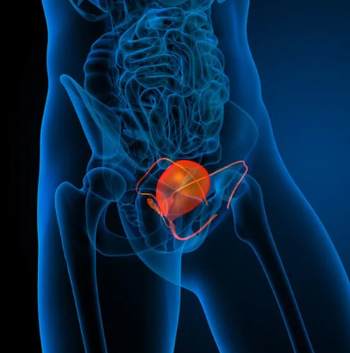
Radiotherapy Associated With Higher Mortality in Prostate Cancer
A meta-analysis found that radiotherapy for prostate cancer is associated with worse overall and prostate cancer–specific survival compared with surgery.
A meta-analysis of 19 studies and more than 100,000 patients found that radiotherapy for prostate cancer is associated with worse overall and prostate cancer–specific survival compared with surgery.
Currently there are no large randomized clinical trials comparing radical prostatectomy and radiotherapy for clinically localized disease. “For patients desiring nonconservative treatment, established clinical guidelines recommend either treatment option and patients must ultimately decide for themselves which treatment to undertake,” wrote study authors led by Robert K. Nam, MD, of Sunnybrook Health Sciences Centre in Toronto.
The authors conducted a review and meta-analysis, focusing on trials they deemed to have a low or moderate risk of bias. They included a total of 19 studies; results were
Overall mortality could be assessed in 10 of the studies, including 95,791 patients. Those treated with radiotherapy had an increased risk of mortality compared with those treated with radical prostatectomy, with a hazard ratio (HR) of 1.63 (95% confidence interval [CI], 1.54–1.73; P < .00001).
The same result was seen when patients were divided by initial risk. Those with low-risk cancer had an HR with radiotherapy of 1.47 (95% CI, 1.19–1.83; P = .0004), those with intermediate-risk disease had an HR of 1.50 (95% CI, 1.24–1.82; P < .0001), and those with high-risk prostate cancer had an HR of 1.88 (95% CI, 1.64–2.16; P < .00001). There was no difference in terms of when the patients were treated with radiotherapy, either in the “early” period prior to 2005 or afterward.
Fifteen trials encompassing 118,830 patients could be used to assess prostate cancer–specific survival, where a similar benefit with surgery was seen. Those treated with radiotherapy had an increased risk, with an HR of 2.08 (95% CI, 1.76–2.47; P < .00001). Once again, the low-, intermediate-, and high-risk patients all had similarly higher risk with radiotherapy.
The authors noted the possible effect of residual confounding of the analysis because it is based on observational data. “It is well established that patients treated with radiotherapy tend to be older and have a higher level of comorbidity,” they wrote, which could play a role in the increased risk compared with surgery. Still, these results could aid in clinical decision-making, at least until the long-term, 100,000-patient randomized
Newsletter
Stay up to date on recent advances in the multidisciplinary approach to cancer.

















































































